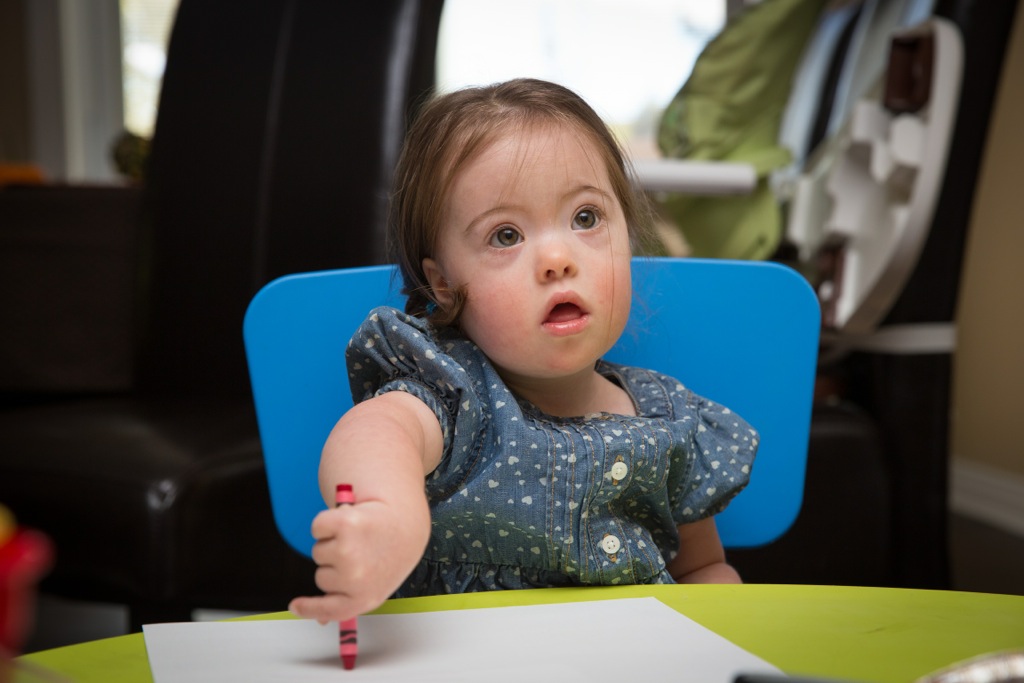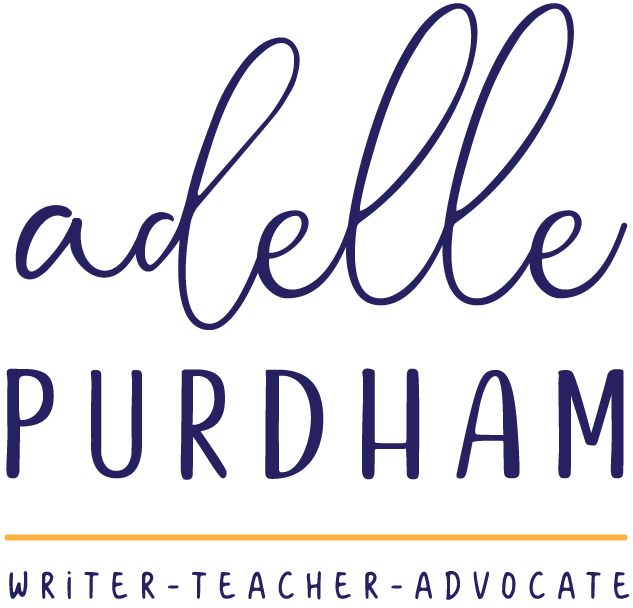
The new school year’s begun and we’re off and running! We’re on our way to…hopefully somewhere good. Because that’s the question we have to ask ourselves as parents and as teachers: where do we want our students and our children to go? All of these days spent at school, all of this education, but for what? As we approach our daughter Elyse’s IEP meeting (Individual Education Plan) I’ve been giving these questions a lot of thought. What kind of learners do I want my children to become? When their days in school are said and done, what are they going to walk away with? And what will be their contributions in return?
My children’s future is theirs to discover and build. It’s not for me to say what they will become or how exactly they will get there; it is only for me as their parent to give them every opportunity and to infuse their lives with love. All that I can ask of their schools is that they give my children the same: opportunity and support. Confidence.
We’ve reached a comfortable stage in Elyse’s education. She’s in grade two and this is her fourth year in the same school. They know her and they know our family. In so many measures this is a relief. There was a soiree at the girls’ school tonight and I easily slipped in with a group of teachers standing in a circle. I poked fun at myself for doing so, for fitting in so casually among them, and one of them kindly reminded me that I am one of them, or at least I used to be. There’s muscle memory involved when it comes to teaching. Your bones don’t forget. I took a step outside of the circle, back to where I belonged, and made my way anonymously into the auditory to sit with a sea of other parents, mere mortals.
I have to remind myself not to get too comfortable or to become complacent or content with the status quo. Essentially, I need to stand guard as the mother warrior that I am. I need to stand guard for the sake of my daughter’s education – we all do. The start of a new year is the start of new opportunity and chances to grow. I need to remain in the loop, as well as be a part of the loop that envelops my daughter’s education. While I can stand in the circle, I need to remember my place in it; my duty to my daughters. Hence my participation at curriculum night.
The principal cautioned us this was not ‘interview-the-teacher night’ or a time to ask how is my child doing? The first thing I asked was how is my child doing? My school-aged girls are in the exact same class this year. A split class and a first. We’re carrying this out as a sort of experiment – siblings together! Let’s see what happens! The idea bubbled forth with enthusiasm from Ariel and Elyse at the end of last year, so I figured why not? We put in the request and were graciously accommodated. Ariel and Elyse each have their own groups of friends. I’m no longer as worried that Ariel will try to take responsibility for Elyse or vice versa. The only difference is now Ariel comes in with these short reports about Elyse and her situation in class. There are both positives and negatives to this.
Positive. “Mom, Elyse gets to pick helpers each day to help her come inside and put her stuff away and everyone in the class puts their hand up.” Hmm…Elyse should be putting her own things away, I think, but this is an excellent point of discussion to follow up on at our next meeting. Also, I’m happy to hear of the love Elyse’s classmates show her. I spoke to three different parents at the information night who told me how pleased their son and or daughter was to be in Elyse’s class. Every parent needs to hear this.
Negative. “Mom, Elyse sits at a desk by herself so that she isn’t distracted or distracting others.” Hmm…again, this one made me think. How would I feel if I were made to sit alone? Is this a choice? Are there other options? Are there adequate opportunities to work with her peers in this scenario? Because working with her peers is crucial. I don’t want recess to become the only time Elyse is truly included with her classmates – and, thankfully, I know she is fully included and plays with her friends at recess time – but the bulk of the day happens in class. Ariel’s little bits of news, which I am in no way soliciting, by the way, are giving me some points for discussion with the school. New teacher, new year. Everyone has to make sure they’re on the same page.
I think the mistake we sometimes make as parents is ASSUMING teachers will know how we would want our child to be treated, for example, as a learner. Never assume. Teachers operate busy classrooms and they’re only human. They want the best for every student, and as the parent, you can help set the tone for what that may look like. Request meetings and have conversations. Every year that goes by, I never want to look back and have regrets about what we could have done differently with the school and Elyse’s education if only I’d expressed my thoughts. Learn to listen too, advice I am constantly working on.
I want to see my girls progressing, to keep progressing, even if that means every year that I will become the broken record, playing for Elyse, singing the same song over and over, “keep those expectations high!” Oh! And I see here you’ve written the expectations out for me on a few lovely sheets of paper creating a legal document known as an IEP or PEI in French. Excellent! I’m going to spend the time to read this over carefully now, so I can not only support Elyse in her learning goals at home, but also hold the school accountable for helping her reach these goals in the classroom. I should clarify that accountability isn’t about blame, it’s about making sure supports are in place to put goals into action. Assuming that I agree with the goals in the first place, because if I don’t then NOW, at the beginning of the year, is the time to SAY SOMETHING. When we question others we do so in a light that shows a respect for the work that has been done, for ourselves and for our child.
Creating the IEP is the role of the Special Education Resource Teacher (SERT) in conjunction with the teacher in our board, and likely in your board too (although the terminology could be different). I may be a teacher, but I never discount myself as Elyse’s parent. As the parent, you know your child best. Get in the schools and work with them to advocate for your child. Are they getting the supports they need? If not, why? And what is being done about it? What can you do to help at home?
In years where I’ve been more involved at the school and maintained contact with the teacher, and I can see what is happening in my child’s classroom – not even through physically being there, but by communication with the teacher and the occasional meeting, I have felt much better about their education and the answers to the above questions regarding where this is all leading. The goals are visible, plain as day, on the pages of the IEP.
Parents often feel helpless to change what is happening at school, and admittedly, I’ve been there too. But one strategy that really helps and works is to build relationships within the school (with teachers, the principal, support staff and other parents) and to offer to help at home. Show that you are willing to practice the skills the school is working on at home. And then do it. What this means is that you are a team. With 24 to 30 students plus, teachers are going to do what they can in the classroom, but they can’t do it alone. Your child’s education is a team effort.
While each student is but a drop in the ocean, one day they will become the waves that shift the tides. While I stand by my proclamations that academics are at the foundational core of my daughters’ educations: literacy and math skills, science and art fundamentals; perhaps the greatest gift they will walk away from school with is a strong sense of self-worth and the capacity to be kind and empathetic toward others. I want academics to be the pathway that leads them there. In other words, I want my children to leave school as well-rounded, academically oriented, good citizens. It takes an inclusive community of learners and teachers and parents to do that.
While every year we’re taking small steps toward this goal, we’re also starting again from the beginning in some respects; I hold hope and watch with joy as my girls continue to learn. This is the year Elyse is going to learn to read. I can feel it. It’s coming for her, and I’m so excited. I will be sharing this goal with the school, because what good will it do to keep it to myself? And you know what? Her teacher and her school want Elyse to learn to read, too. We are going to work on this goal together.
When I ask myself where my girls are going, I envision a river moving into a glimmering sea. They’re being pulled along by the current, but we as their parents and the teachers in their lives are there beside them on life rafts, keeping their heads afloat, providing guidance and knowledge to steer them in the right direction. Where are they going exactly? The answer to the question never wavers. Toward a bright future ahead.





No comment yet, add your voice below!